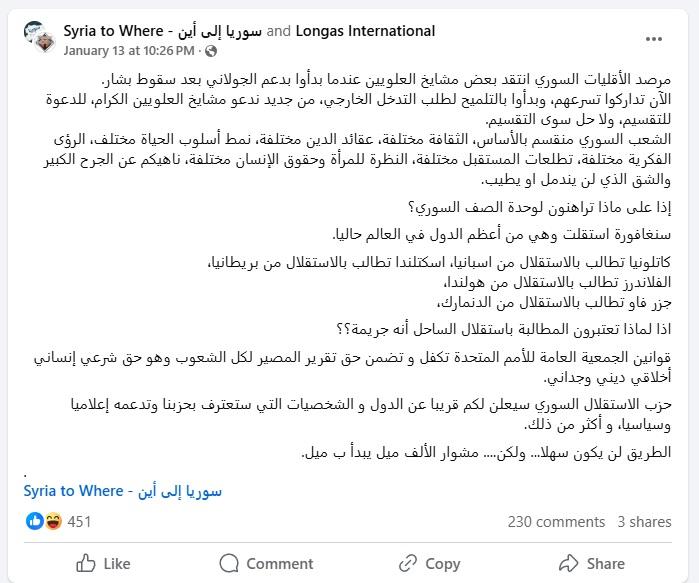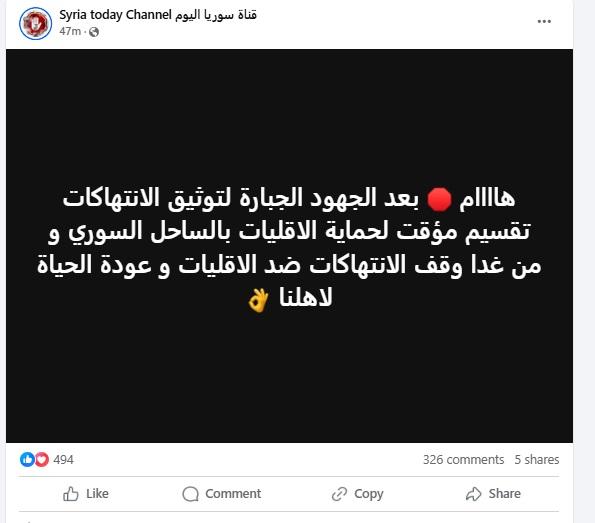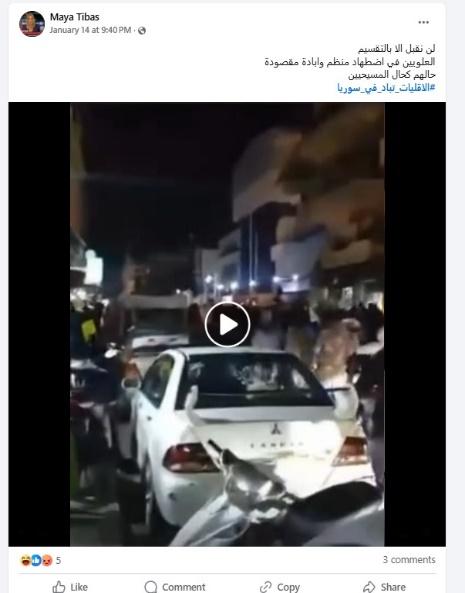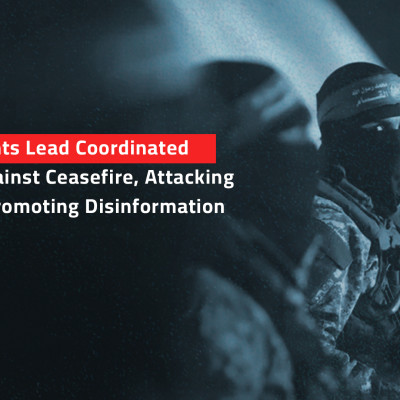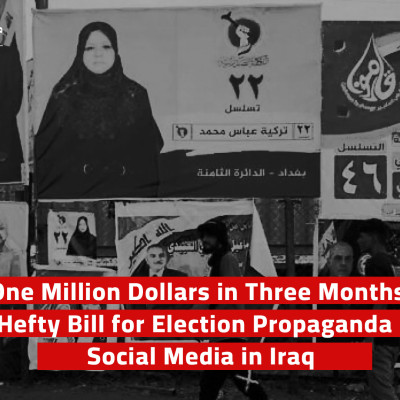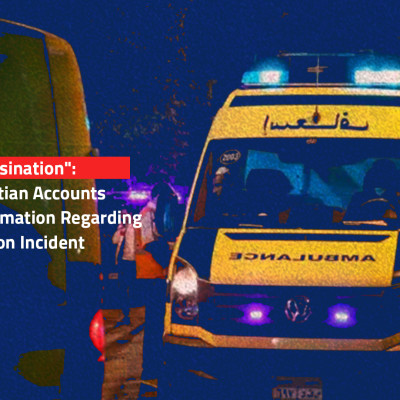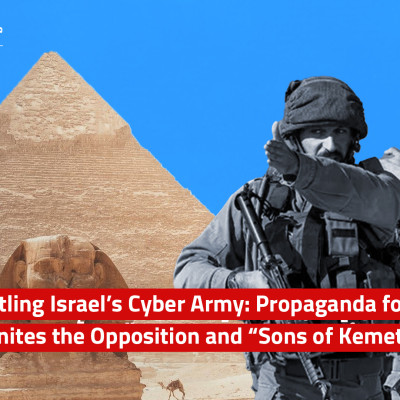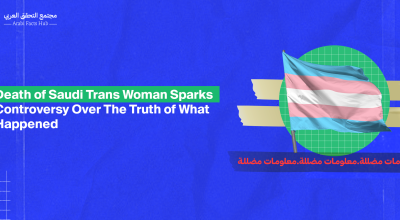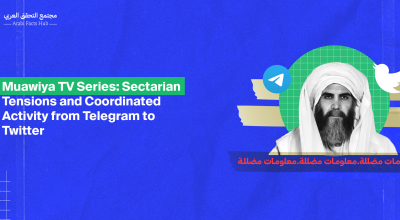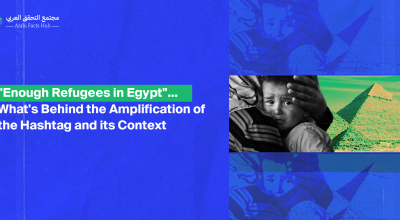Pro-Iran Accounts Exploit Sectarian Divisions in Syria

Online actors have fueled sectarian tensions between Sunnis—the majority in Syria—and Alawites, either by suggesting acts of revenge or by using sectarianism as a tool to attack the current ruling authority in the country.
Social media was flooded with a wave of disinformation accompanied by intense sectarian rhetoric in Syria during the weeks following the ousting of former President Bashar al-Assad.
Pages and accounts—mostly linked to Iran-aligned forces in the region—worked to fuel sectarian tensions and spread fear among the Alawite community, to which Assad belonged and which had controlled most military and security affairs under his regime. These accounts suggested that members of the country’s new administration might carry out acts of retaliation.
Reports indicate that Alawites make up between 10% and 15% of Syria’s total population, with most residing in the northwest, particularly in Latakia and the coastal villages and cities. International media outlets, such as France 24 and the BBC, have reported testimonies from Alawite Syrians who spoke of harassment they have faced and expressed fears of marginalization. Many voiced concerns about being held responsible for Assad’s actions, emphasizing that they, too, suffered under his rule, just like the rest of the Syrian people.
Since the fall of the regime on December 8, 202 and until mid-January 2025, the Alawites have been a major topic of discussion and debate on social media. This is reflected in Meltwater statistics, which show over 217,000 posts on X containing the word “Alawites” or focusing on them.
”
Since the fall of the regime on December 8, 2024 and until mid-January 2025, the Alawites have been a major topic of discussion and debate on social media. According to Meltwater statistics, there have been over 217,000 posts on X containing the word “Alawites” or focusing on them.
These posts garnered over 115 million views, with an additional potential reach of 201 million views. Discussions about the sect also sparked more than 1.424 million interactions, including likes, reposts, replies, and quoted comments, averaging 36,000 engagements per day.
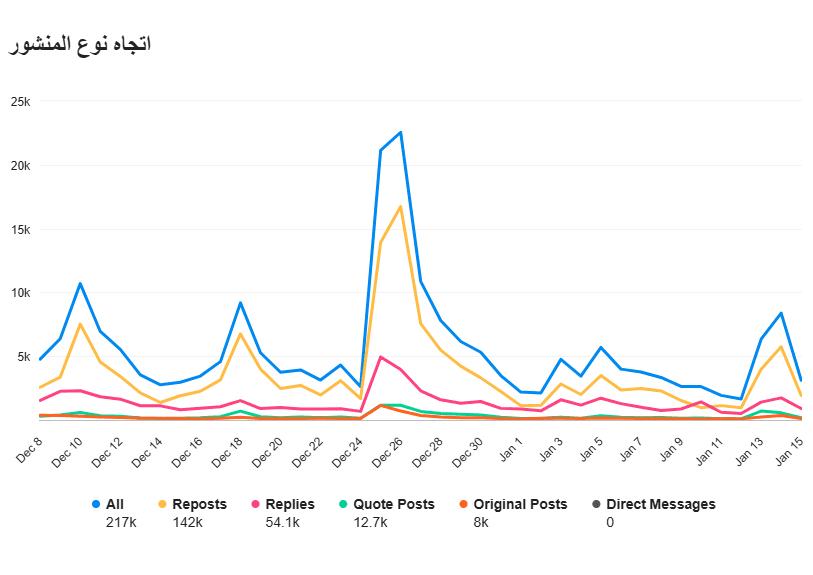
Activity periods and nature of interactions around the term “Alawites” – Meltwater
Accounts and Pages
Several accounts and pages have played on sectarian tensions between Sunnis—the majority in Syria—and Alawites, either by insinuating acts of revenge or using sectarianism as a tool to attack the current administration.
Most of the accounts and pages actively fueling sectarian narratives fall into two main categories. Some accounts present themselves as Syrian platforms concerned with Alawite affairs, frequently sharing posts that contain rumors or unverified information. Some openly support the former regime, displaying images of the previous president and echoing its political propaganda from the civil war years, while others are newly created and appear to be dedicated solely to this purpose.
The second type of accounts has a broader, transnational character and focuses on discrediting Syria’s current leadership. Their content consistently amplifies negative narratives about the government, emphasizing alleged sectarian abuses and using those for incitement and agitation.
The profile sections of these accounts feature images of Iranian leaders and officials, as well as slogans and footage of regional group leaders affiliated with Tehran, such as Lebanon’s Hezbollah, Iraqi Shiite factions, and Yemen’s Houthis.
The online presence of the first type of pages extends across multiple social media platforms, with some operating actively in both Arabic and English.
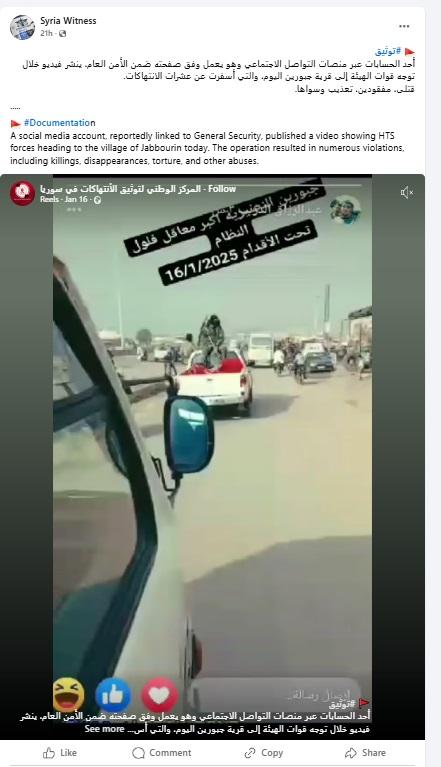
Some of these pages present themselves as representatives of Alawites or minority groups in Syria, using names such as Syria Today Channel, Alawites, Alawite Renaissance, Syrian Minority Observatory, National Center for Documenting Violations in Syria, Masyaf Now, Syrians Around the World, Syria, Syria Witness, Syria Where To?, and Longas International.
Most of these pages were created within a short timeframe in December 2024, specifically on the 16th, 17th, 21st, and 25th. They share a common pattern of circulating posts that focus on alleged violations or advocate for the division of Syria.
Notably, these pages indicate their locations in their profile sections, listing places both inside Syria and abroad. However, Facebook’s transparency feature reveals that their administrators are actually based in other countries. Some other pages, meanwhile, provide no information about their location or management.
For example, the page Syria Where To? claims to be based in Damascus, yet it does not disclose its actual location through Facebook’s transparency feature. However, it frequently tags another page called Longas International, whose administrators state that it is based in Toronto, Canada. Despite this claim, Facebook’s transparency feature reveals that the page is actually managed by three accounts located in Indonesia.
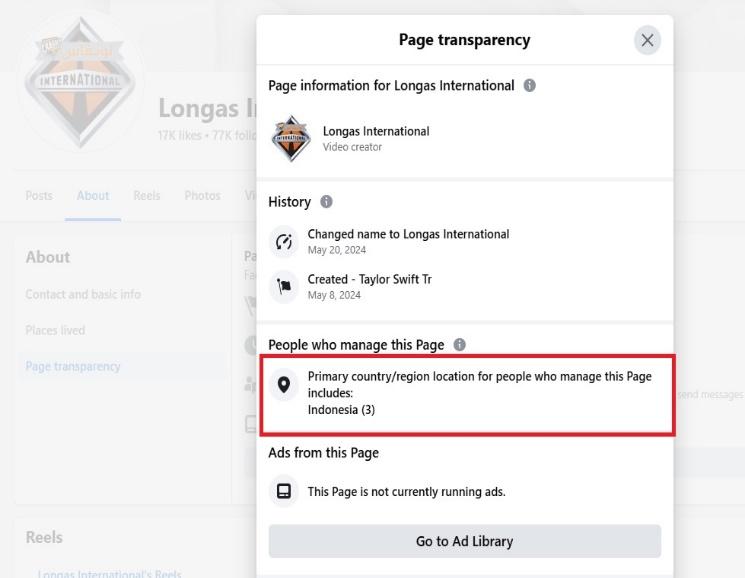
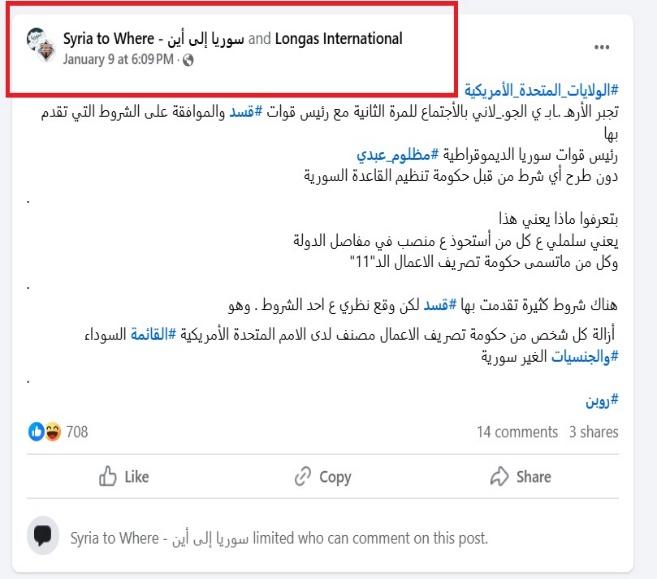
Similarly, the National Center for Documenting Violations in Syria claims to be managed from Switzerland. However, Facebook’s transparency feature reveals that it is actually administered by two accounts based in France.
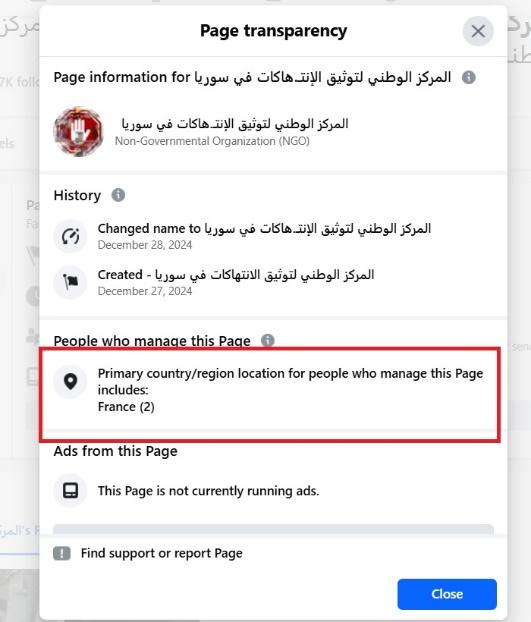
As for the page Syrians Around the World, it was created on May 10, 2014, and has been active in fueling sectarian tensions and attacking the current administration. Previously, it was involved in political propaganda for Bashar al-Assad since the early stages of the Syrian crisis.
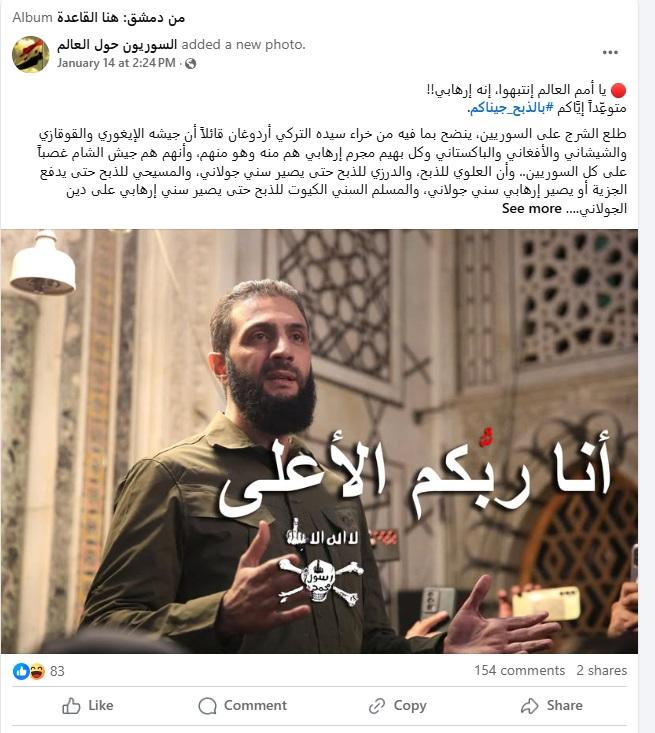
The Syrians Around the World page is managed by a person named Basel Al-Wajihi from three unknown locations, according to Facebook’s transparency feature. However, a deeper investigation revealed three possible countries where he may be operating: France, Germany, and Sweden. This conclusion is based on data from Meta’s ad library, which tracks paid advertisements on Facebook.
Our findings were derived from analyzing six versions of a single ad funded by the page over an extended period, from early last year until January 13, 2024. Facebook’s transparency feature also identifies Syrians Around the World as a page that publishes paid political content.
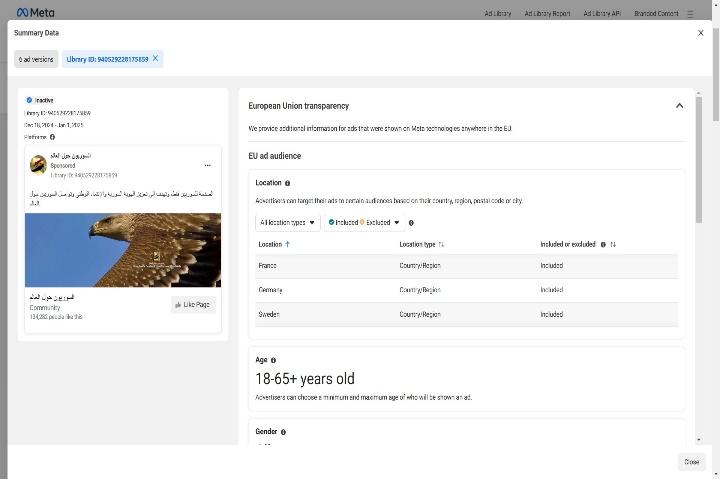
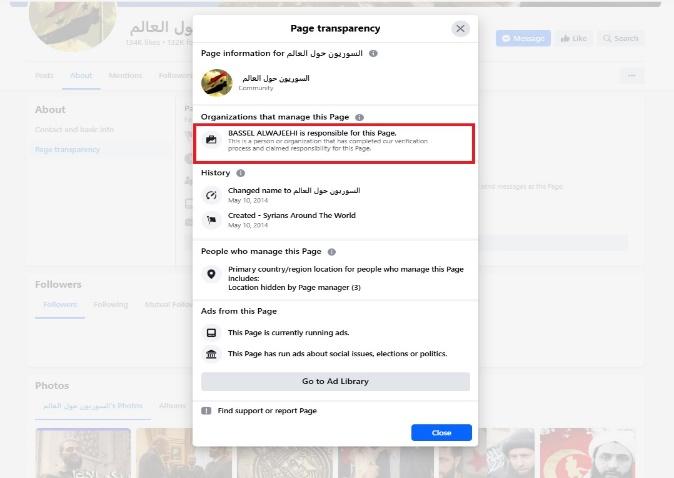
The page currently has two active advertisements that were launched on January 11 and 15. One of them defends Bashar al-Assad and prays for his victory, while the other attacks what it refers to as the “Islamic terrorists and their criminal followers of the green sort” a phrase used to describe opposition factions that overthrew the former president.
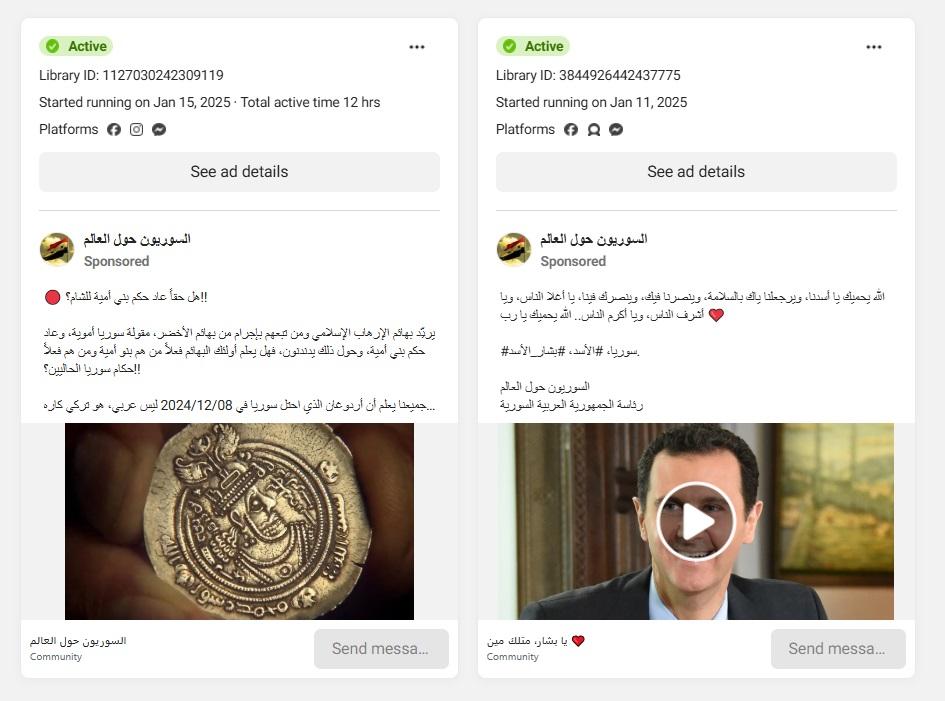
In 2012, Al-Wajihi launched a campaign titled Lions of Syria Combat Corruption and Support the Syrian Economy, with Syria’s official news agency reporting his statements at the time.
On the day of the collapse of the Assad regime, Al-Wajihi renamed his campaign page to Together We Build Syria’s Economy and changed its profile picture to the Syrian revolution flag. However, two images of Bashar al-Assad remained on the page.
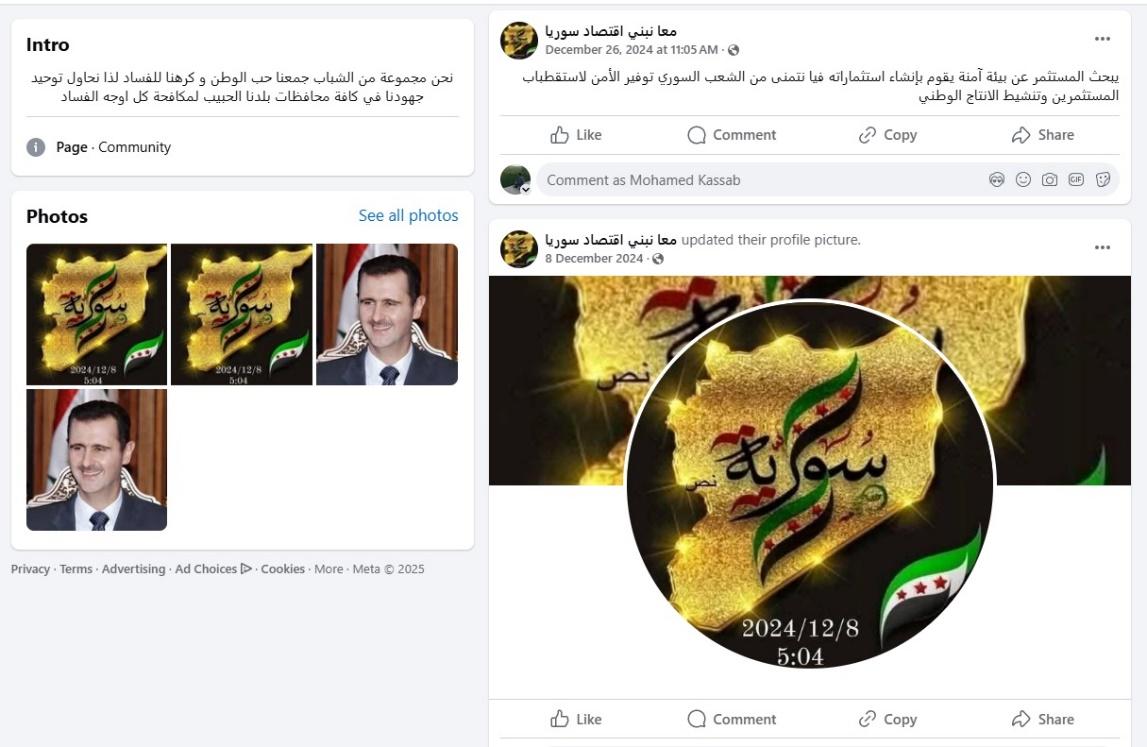 Previously, Al-Wajihi launched the Global Campaign to Support the Syrian Lira in August 2011 and actively promoted it in groups consisting of supporters of the former president.
Previously, Al-Wajihi launched the Global Campaign to Support the Syrian Lira in August 2011 and actively promoted it in groups consisting of supporters of the former president.
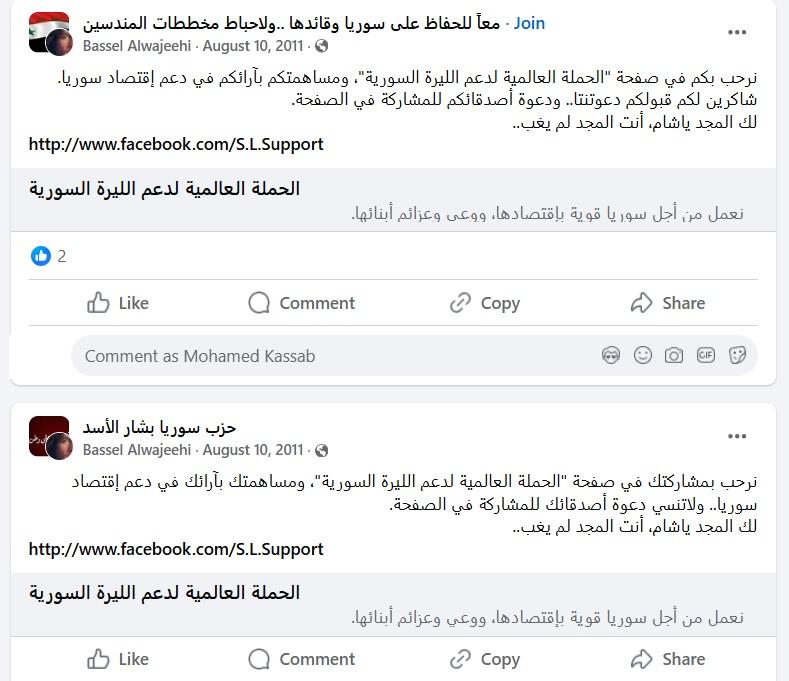
Al-Wajihi does not provide much personal information on his main social media accounts. However, a profile on Bayt, the Arabic counterpart to LinkedIn, offers some insight into his background.
According to his profile, Al-Wajihi has over 38 years of experience in business management and digital marketing. In 2008, he founded an advertising agency in Saudi Arabia called MarketLines Corp. He studied entrepreneurship at King Saud College in the mid-1990s and earned a master’s degree from King’s College London in 2005.
Additionally, data from his YouTube channel indicates that it is managed from the United States.

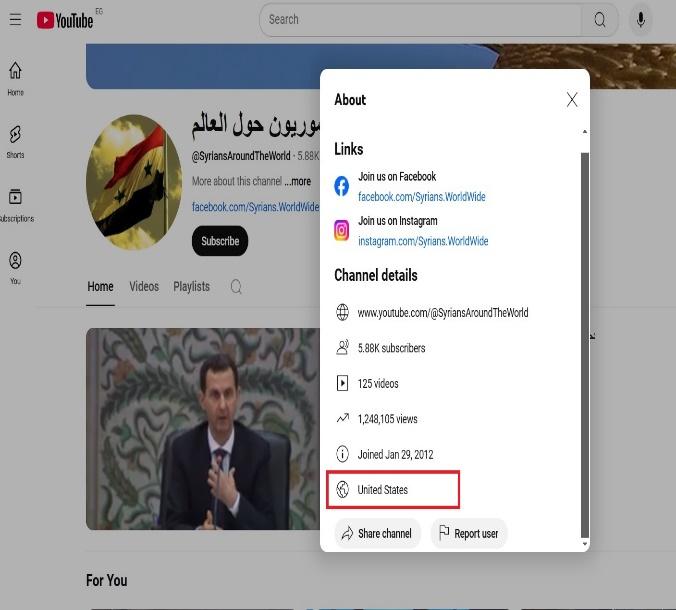
Disinformation
Since Assad’s departure from power and his escape to Russia, the surge in daily posts about alleged abuses against Alawites has put fact-checking platforms and researchers on high alert to verify the accuracy of circulating information on social media.
There has been widespread dissemination of old video clips, some dating back to the years of the Syrian crisis or unrelated to Syria altogether, while others have been taken out of context.
The second type of accounts— mentioned above—has played a significant role in continuously spreading disinformation. Although these accounts appeared to be acting independently, the nature of their content suggests coordination and a single entity orchestrating them.
Iran may have left Bashar al-Assad to face the advancing opposition factions in Damascus until his eventual escape from the country. However, accounts that have consistently participated in online campaigns aligned with Iran’s interests and its allied armed groups in the region were actively involved in the wave of disinformation surrounding Syria following Assad’s departure.
”
While Iran may have left Bashar al-Assad to face the advancing opposition factions in Damascus, accounts that have regularly participated in online campaigns reflecting Iran’s interests and those of its allied armed groups in the region played a prominent role in the wave of disinformation surrounding Syria after Assad’s departure.
For example, political writer and analyst Hussein Al-Dairani has posted several manipulative videos about the reality of Alawites following Assad’s exit. Al-Dairani’s profile picture features a photo of him shaking hands with former Iranian Foreign Minister Amir-Abdollahian. His statements are frequently quoted by Iranian media and Lebanese outlets affiliated with Hezbollah.
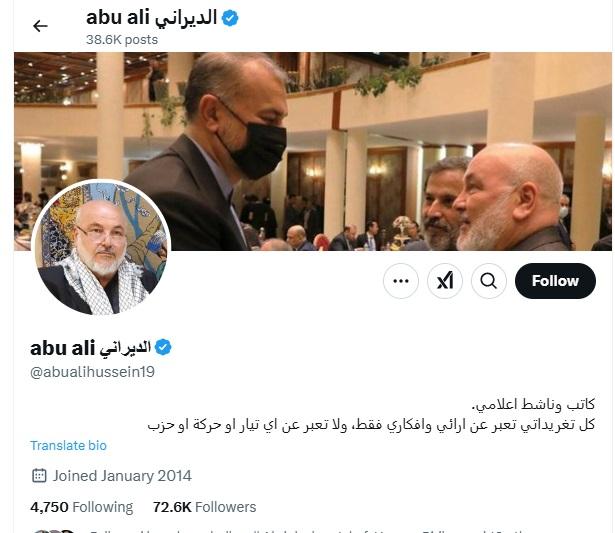
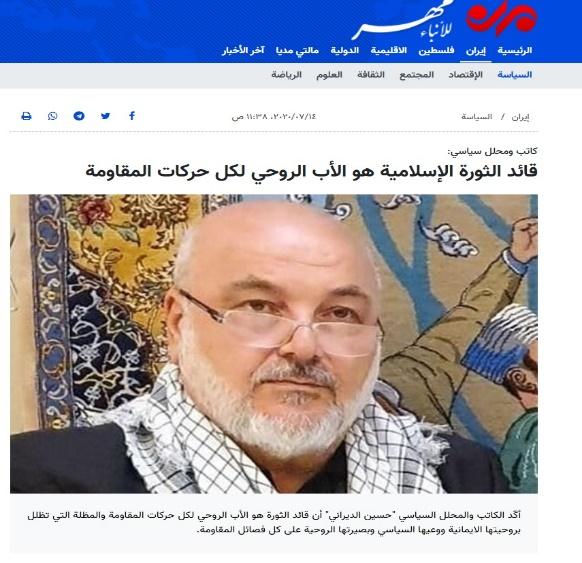
On January 14, 2025, Hussein Al-Dairani posted a video claiming it depicted the "new-old Syria" at the moment when "mercenaries of Hay’at Tahrir al-Sham"—the group once led by the current Syrian administration’s head, Ahmad Al-Sharaa (Abu Mohammad al-Julani)—were shooting at Alawite children. He alleged that the video was filmed in Syria’s Alawite coastal regions. However, fact-checking revealed that the footage was actually from Iraq and was recorded in 2019.
The video was also shared by accounts featuring profile pictures of former Hezbollah Secretary-General Hassan Nasrallah, Iran’s Supreme Leader Ali Khamenei, and Houthi leader Abdul-Malik al-Houthi.
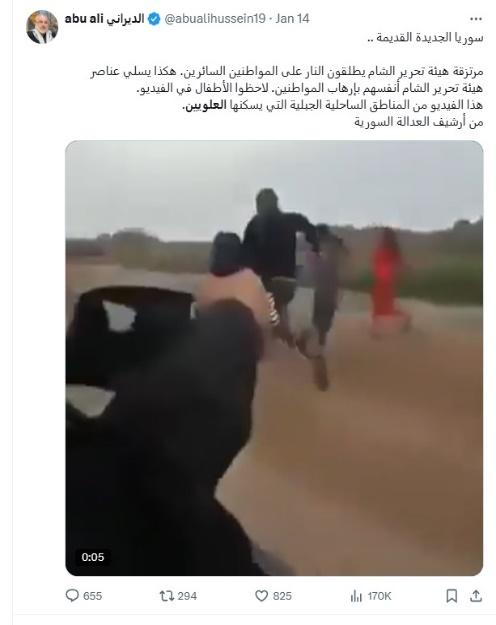
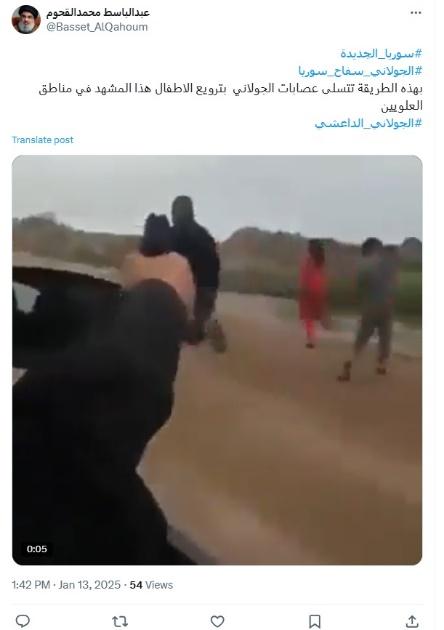
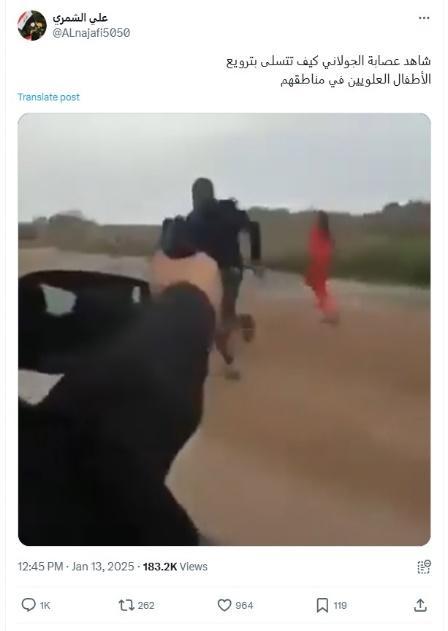
One of the most prominent pieces of disinformation circulating in recent weeks was the claim that churches were being shut down by members of military operations. Several pages promoted posts alleging that "Aya Sophia Church in the city of Suqaylabiyah, in the countryside of Hama province, was permanently closed after its caretakers were threatened." However, this claim was proven false, as confirmed by Ta’kkad (Verify), a Syrian platform specializing in fact-checking.
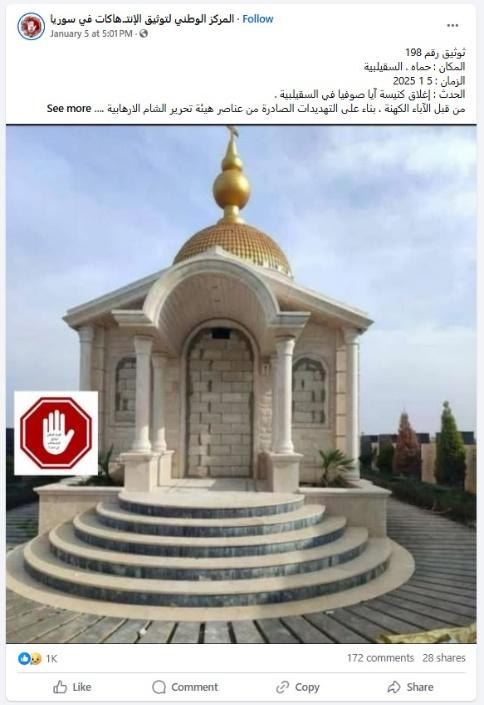
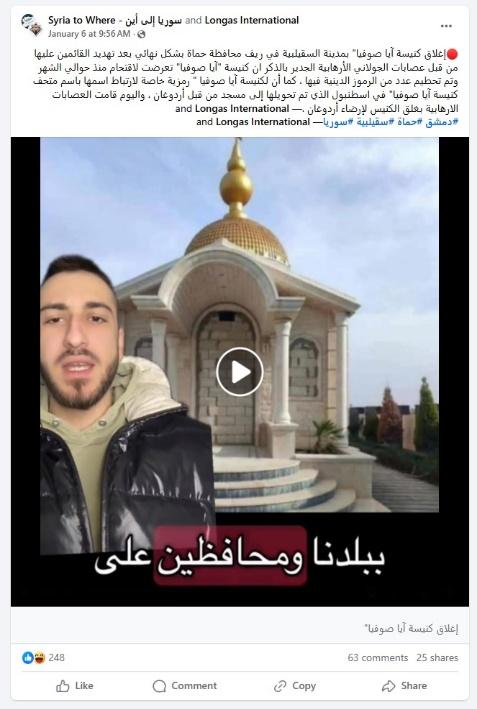
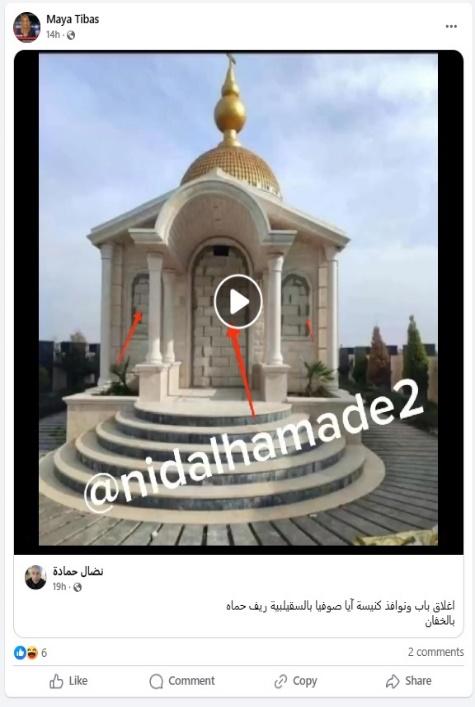
Incitement, Hate, and Calls for Partition
Posts, particularly on Facebook—the most widely used platform in Syria—contained hate speech and incitement against various segments of the Syrian population. These pages built their inciting narratives around events and video clips taken out of context or lacking complete information. One such claim alleged the burning of the shrine of Abu Abdullah Al-Hussein bin Hamdan Al-Khasibi in Aleppo, accompanied by a video showing dead bodies near the site, which was falsely circulated as having occurred in the middle of January 2025.
However, Syria’s Ministry of Interior issued a statement refuting this claim: "We confirm that the widely shared video is old, dating back to the liberation of Aleppo, and was carried out by unidentified groups. Our security forces work tirelessly to protect property and religious sites. The purpose of recirculating such footage is to incite discord among Syrians during this sensitive period Syria is going through."
As certain pages fueled controversy over the alleged incident, they also resurfaced inflammatory phrases attributed to opposition factions, using them to amplify tensions and advocate for international protection of minorities. Among the language that was reintroduced "Nusayri police, be patient Alawites, we are coming to slaughter you without an agreement," "Christians to Beirut, Alawites to the grave,” "Iran, lose your mind—A Sunni is going to rule us."
Other posts explicitly promoted sectarian conflict, such as: "A word of advice to those in power: Do not force the coast to fight you, because you will lose… No one can fight the mountains! The coast is every Alawite on Syrian soil, and every Alawite in Syria is the coast."
Pages like Alawites, the National Center for Documenting Violations in Syria, and the Arab Observatory for Human Rights actively pushed specific hashtags alleging "genocide against Alawites," calling for their rescue and an end to their persecution: #AlawiteGenocide, #StopAlawitePersecution, #SaveAlawites، #EndAlawiteDiscrimination, #JusticeForAlawites.
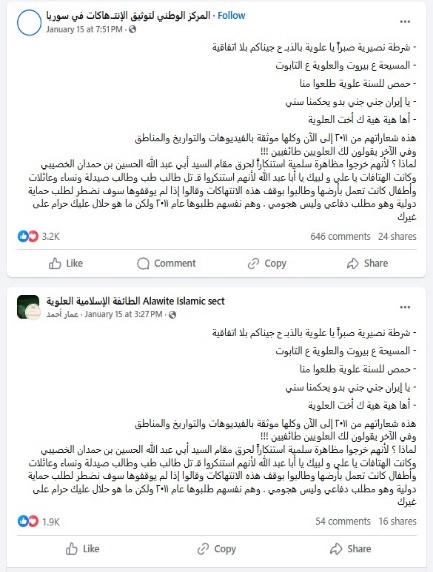
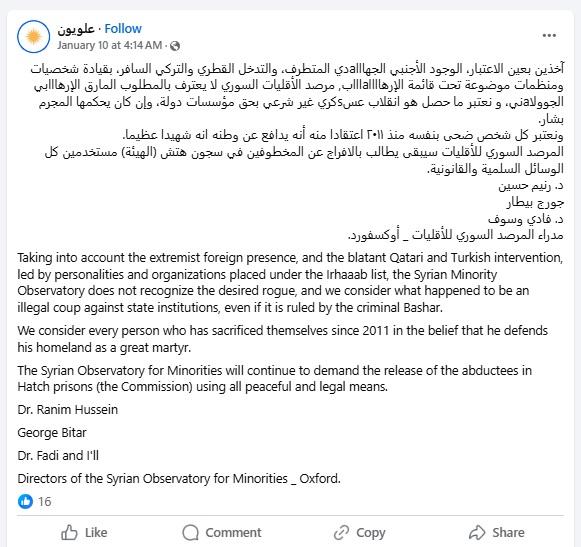
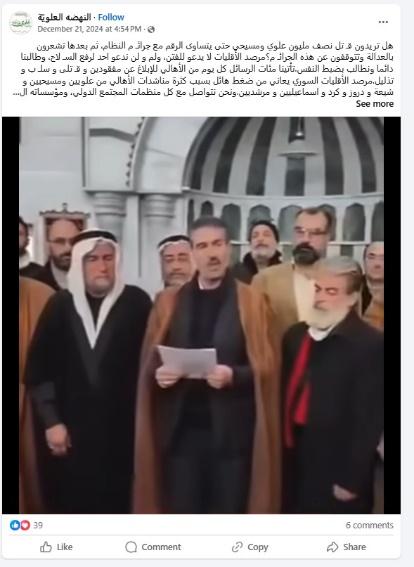
These hashtags were in at least 1,000 posts, with content published in Arabic, Turkish, and English. The posts originated from around 600 accounts, some of which featured images of Bashar al-Assad. Among the most notable accounts were:
@YourmediaAgenc, @Syria4Syrians1, @NPC_Assasin, @R6914472180696, Tarih: 31/12/2024, @claire3679892, @AdhamHano22177, @Maudedebeauvoir, @__VOT___, @klcMesutklc.
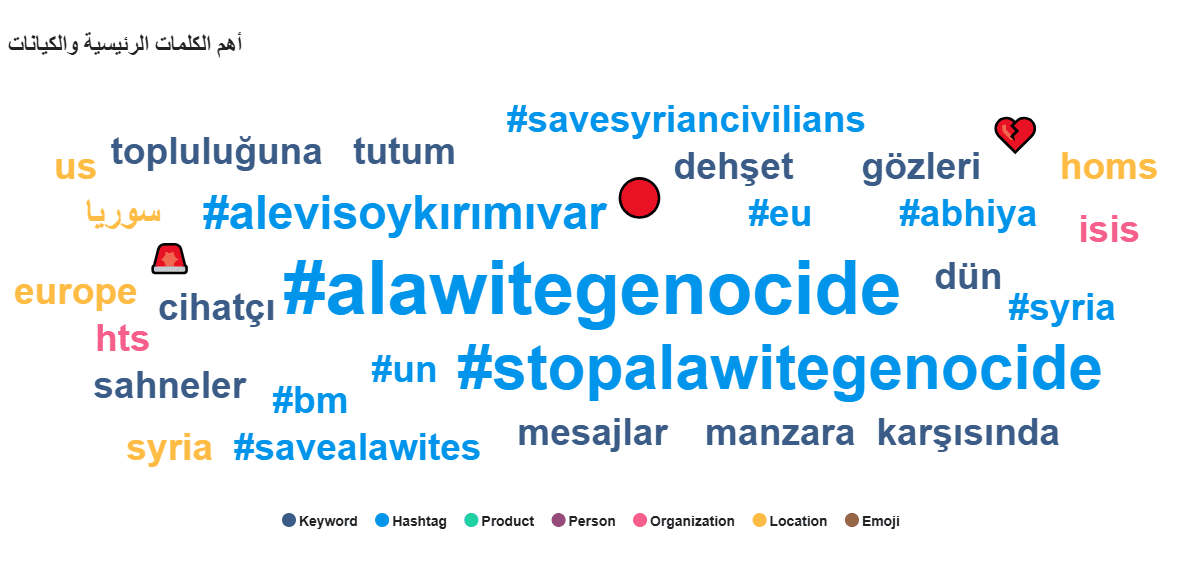
Some posts also called for the partition of Syria, emphasizing that the country’s coastal regions—where the Alawite community is concentrated—should be part of this division. They cited independence movements such as Catalonia in Spain and Scotland as examples.
Pages declared: "We will accept nothing but partition… The Alawites are facing systematic persecution and deliberate extermination, just like the Christians."
